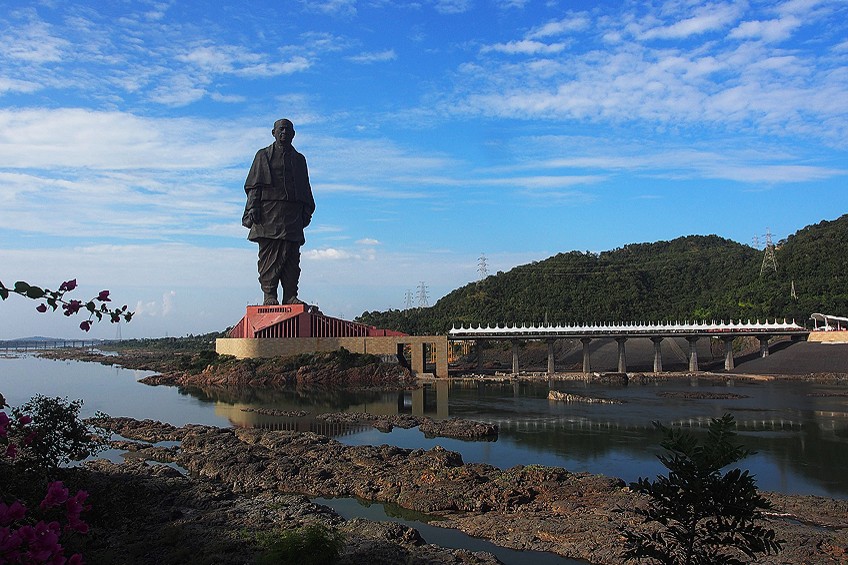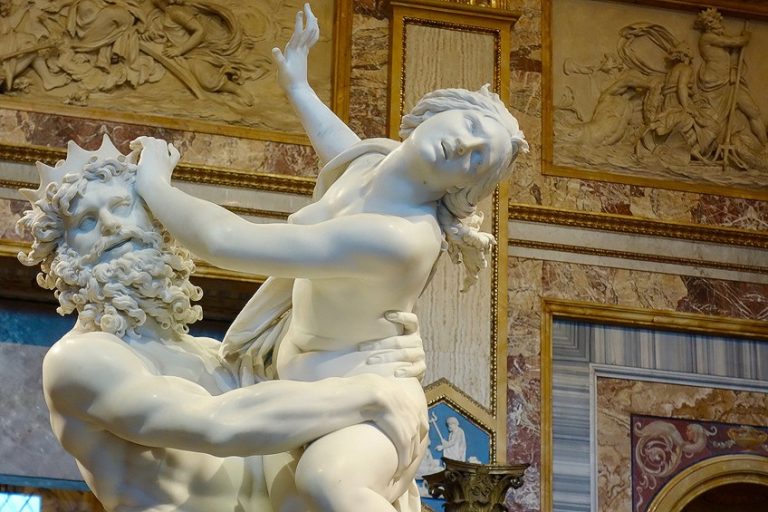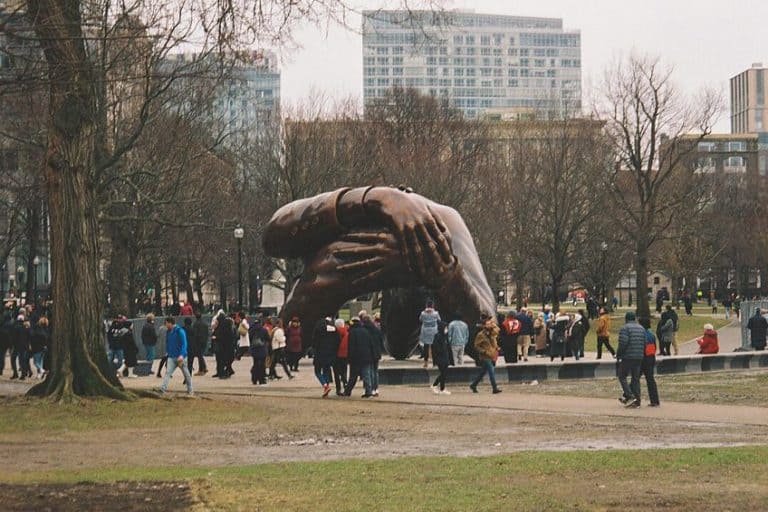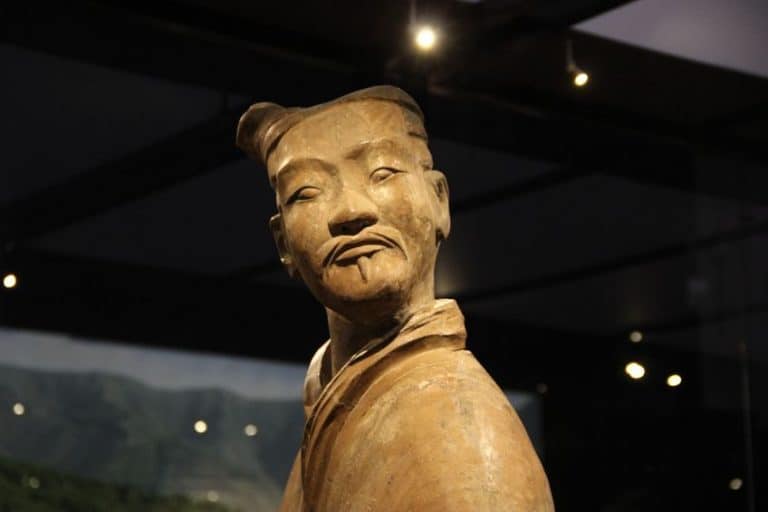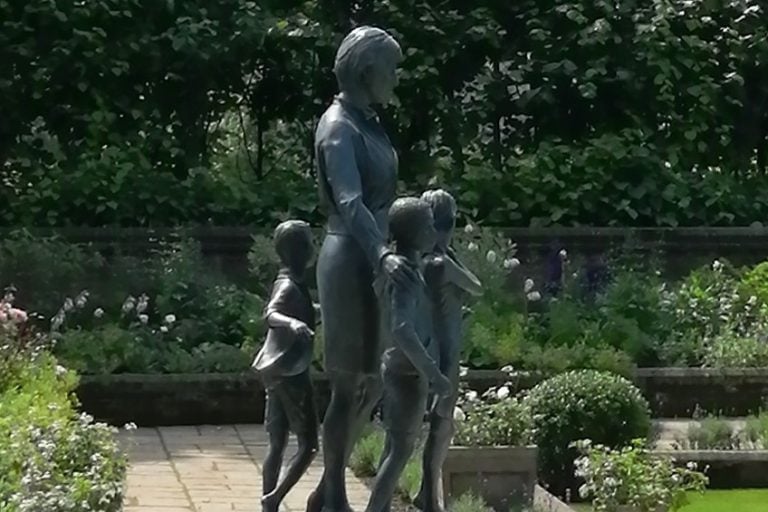Statue of Unity – Learn Everything About the World’s Tallest Statue
Did you know that the world’s tallest statue is in fact the Statue of Unity? But exactly how tall is the Statue of Unity and where is the world’s tallest statue? The biggest statue in the world can be found in Gujarat, a state of India. Let us dive right in and learn more about this huge and fascinating Indian statue such as the Statue of Unity’s cost, as well as discover more about the person the statue depicted, Sardar Vallabhbhai Patel.
The World’s Tallest Statue: The Statue of Unity
| Date Completed | 30 October 2018 |
| Medium | Bronze, concrete, steel |
| Dimensions | 182 m |
| Location | Narmada Valley, Kevadiya |
The Statue of Unity honors Indian politician and independence campaigner Sardar Vallabhbhai Patel, who served as India’s initial home minister as well as deputy Prime minister and was a Mahatma Gandhi supporter. Patel was well-liked for his involvement in bringing together 562 kingdoms of India and a large portion of the old British Raj to build the Indian Union. The Indian statue is located on the Narmada River in the Kevadiya colony, 100 kilometers southeast of Vadodara, opposite the Sardar Sarovar Dam.
The biggest statue in the world was designed by Ram V. Sutar, an Indian sculptor, and was dedicated to Narendra Modi, India’s Prime Minister.
History of the Biggest Statue in the World
On the 7th of October, 2013, Narendra Modi proposed the Indian statue to commemorate the start of his 10th year as Gujarat’s chief minister. To carry out the work, a society called Sardar Vallabhbhai Patel Rashtriya Ekta Trust (SVPRET) was founded under the supervision of Gujarat’s Chief Minister.
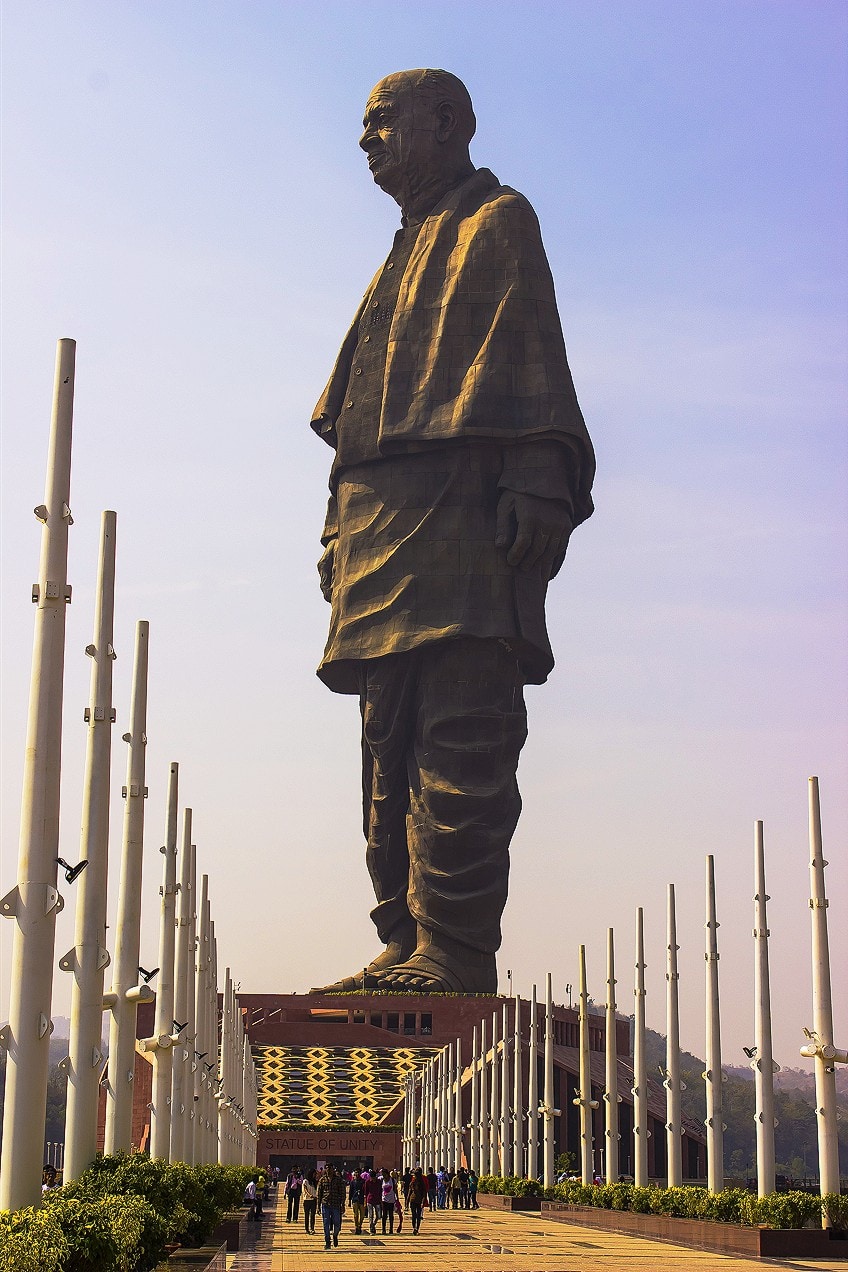
The Statue of Unity Movement began in 2013 in order to gather the iron required for the monument by encouraging farms to contribute their old agricultural equipment. In promotion of the cause, a marathon dubbed “Run for Unity” was conducted on the 15th of December, 2013 in Vadodara and Surat.
By 2016, a sum of 135 metric tonnes of discarded iron had been gathered, with around 109 tonnes of it being utilized to create the monument’s base after refining.
Design and Construction
A panel of scholars, artists, and academics selected a design proposed by Ram V. Sutar after researching sculptures of Patel around the nation. The Statue of Unity is a bigger replica of the leader’s sculpture that is located at Ahmedabad International Airport. Ram Sutar’s son, Anil Sutar, comments on the creation, saying that “the countenance, stance, and position represent the majesty, conviction, iron will, and compassion that his personality emits.” The head is raised, a cloak is tossed from his shoulders, and his hands are on the side as if he is about to move.”
Originally, three versions of the concept were built, measuring 3 0.91 m, 5.5 m, and 9.1 m. Once the concept of the biggest model was finalized, a thorough 3D scan was created, which served as the foundation for the bronze covering cast at a Chinese foundry.
Patel’s dhoti-clad thighs and sandals made the structure narrower at the bottom than at the top, impairing its sturdiness. This was solved by keeping a scale factor of 16:19 rather than the standard 8:14 ratio used by other tall structures.
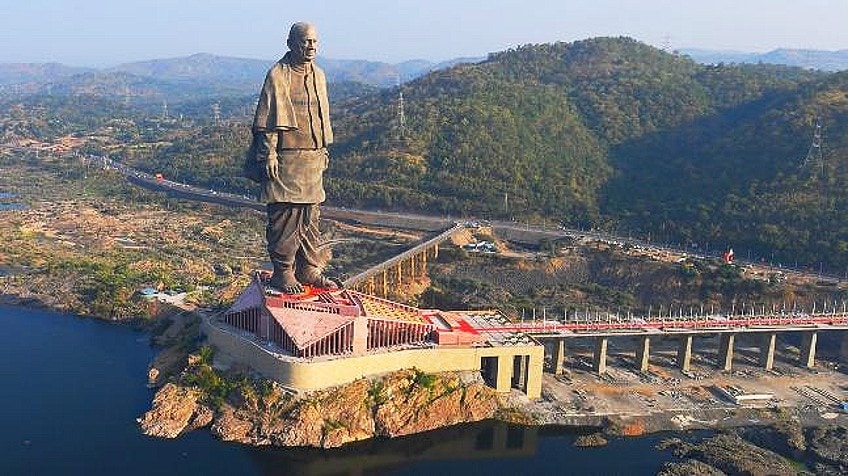
The sculpture is designed to resist winds of up to 180 km/h and tremors of magnitude 6.5 on the Richter scale that occur at depths of 10 km and within a perimeter of 12 km of the monument. This is made possible by the deployment of two 250-tonne tuned mass stabilizers, which provide excellent stability. The Statue of Unity was created using a Public-Private Partnership format, with the majority of the funds coming from the Gujarat government. From 2012 to 2015, the Gujarat state government budgeted US$84 million for the project.
The project took 57 months to complete, including 15 months of planning, 40 months of building, and two months of handover by the consortium. The entire Statue of Unity’s cost was projected by the government to be at US$370 million.
The project was overseen by a collaboration comprised of Michael Graves & Associates, Turner Construction, and the Meinhardt Group. Larsen & Toubro, an Indian infrastructure business, was awarded the bid for the development, building, and maintenance of the monument on the 27th of October, 2014, with the lowest offer of US$530 million.
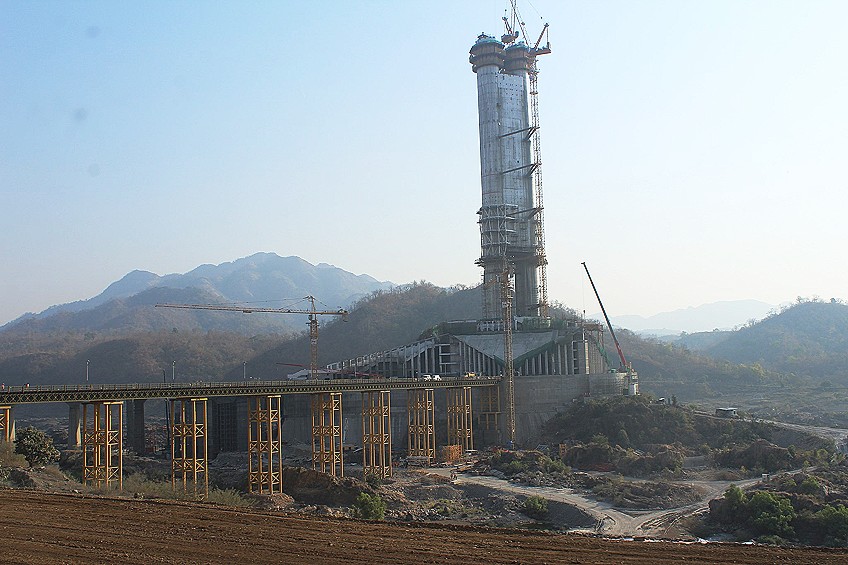
On the 31st of October, 2014, L&T began construction. To create the foundation for the statue, the Sadhu Bet hilltop was leveled from 70 meters to 55 meters. L&T engaged around 3000 laborers and 250 engineers to build the monument. The bronze panels were sent by sea and then carried by highway to a factory near the building site, where they were reassembled. Local tribals from the Tadvi tribe were opposed to the acquisition of property for the building of tourism facilities around the monument. Around 300 people were detained in the days leading up to the statue’s unveiling.
People in the villages of Kothi, Kevadia, Waghodia, Navagam, Limbdi, and Gora protested the statue’s construction and requested the recovery of land claims over 927 acres of property seized earlier for the dam, as well as the foundation of a new Garudeshwar subdistrict. They were also opposed to the establishment of KADA and the development of the Garudeshwar weir-cum-causeway scheme. The Gujarat government agreed to most of their requests.
The statue’s erection was finished in mid-October 2018, and the inauguration ceremony was place on the 31st of October, 2018, officiated over by Narendra Modi, the Prime Minister. The Indian statue has been referred to as a testament to Indian engineering abilities.
Features
At 182 meters tall, the Statue of Unity is the biggest statue in the world. It is 54 meters taller than the former titleholder, the Spring Temple Buddha in Henan Province, China. The previous highest sculpture in India was Lord Hanuman’s 41-meter-tall statue at the Paritala Anjaneya Temple in Vijayawada. Within a 7-kilometer radius, the statue may be seen. The memorial is built on Sadhu Bet, a river island 3.2 kilometers downstream of the Narmada Dam.
The monument and its environs cover more than 4.9 acres and are encircled by a 12 km long manmade lake built by the Garudeshwar weir on the Narmada River downstream. The monument is separated into five zones, only three of which are open to the public.
The first area, which has three floors and comprises the exhibition space, mezzanine, and roof, extends from its foundation to the height of Patel’s shins. A remembrance garden and a museum are also included in the first area. The second area stretches up to Patel’s thigh, while the region continues up to the observation gallery at 153 meters.
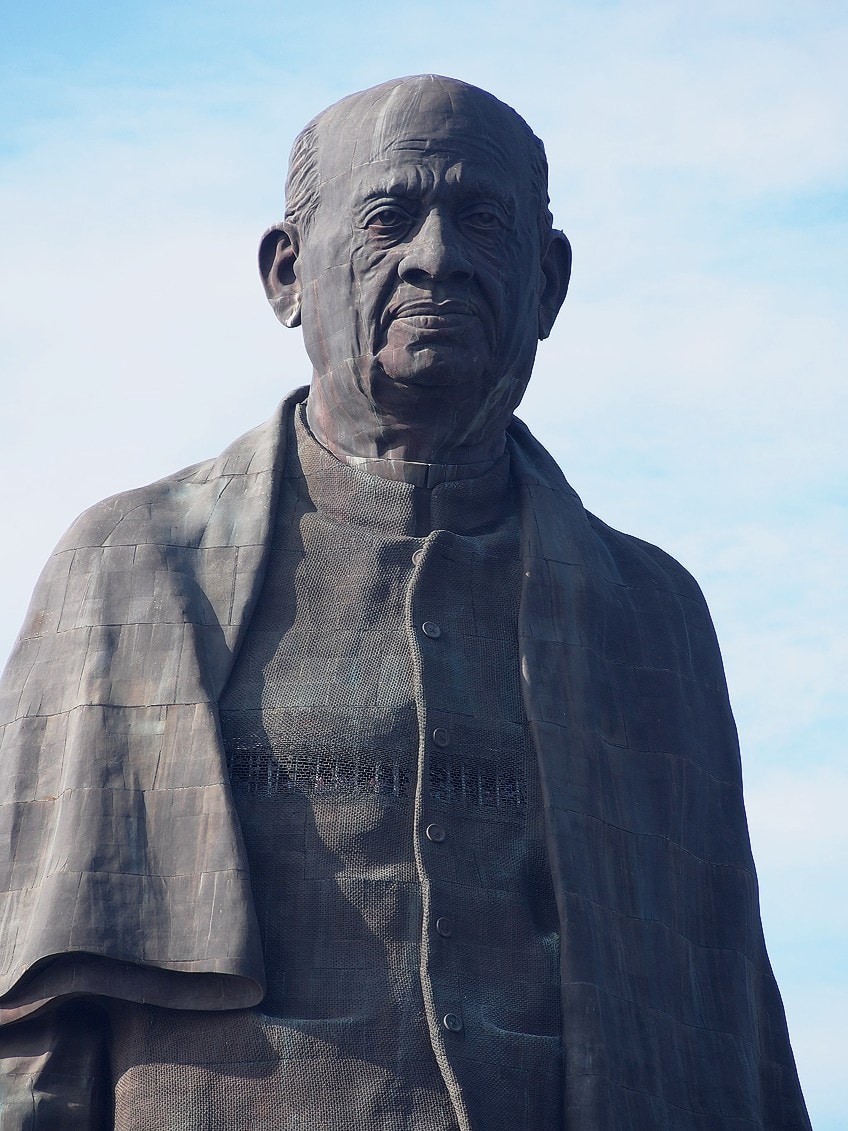
The fourth area is the servicing region, while the last zone is the monument’s shoulders and head. The museum in the first zone chronicles Sardar Patel’s life and accomplishments. An accompanying audio-visual exhibit offers a 15-minute presentation about Patel as well as information on the state’s tribal culture. Each of the concrete towers that comprise the statue’s legs has two elevators. Each elevator can transport 26 passengers to the viewing gallery in less than 30 seconds. The gallery is 153 meters high and can accommodate up to 200 people.
Over 128,000 people visited the monument in the 11 days after its official debut on the 1st of November, 2018. In November 2019, the average daily visitor attendance at the Statue of Unity exceeded that of the Statue of Liberty, reaching 15,036.
It is one of the “8 Wonders of the SCO,” according to the Shanghai Cooperation Organization. The Statue of Unity received 2,900,000 visitors and generated $11.64 million in ticket revenue in its first year of operations. By the 15th of March 2021, the venue has been visited by 5,000,000 visitors.
Who Does the World’s Tallest Statue Depict?
The statue depicts Sardar Vallabhbhai Jhaverbhai, a politician of Indian descent. From 1947 until 1950, he was India’s first Deputy Prime Minister. He was an attorney and a prominent leader of the Indian National Congress, who played a pivotal role in the country’s independence fight and overseeing its merger into a unified, independent country.
He belonged to the Indian National Congress’s conservative faction. In India and internationally, he was frequently referred to as Sardar, which means “chief” in Urdu, Hindi, and Persian.
During India’s political unification and the 1947 Indo-Pakistani war, he served as Home Minister. He was born in Nadiad, Kheda district, and nurtured in Gujarat’s countryside. He was a renowned attorney. One of Mahatma Gandhi’s first political commanders, he led farmers from Borsad, Kheda, and Bardoli in nonviolent civic resistance against the British Raj, and became one of Gujarat’s most powerful individuals. He was elected as the 49th President of the Indian National Congress, where he organized the organization for elections in 1934 and 1937 while also pushing the Quit India Movement.

As India’s first Home Minister and Deputy Prime Minister, he oversaw relief operations for split refugees migrating to Delhi and Punjab from Pakistan, as well as attempts to restore peace. He oversaw the work of constructing a unified India, effectively incorporating the British colonial provinces that comprised the Dominion of India into the freshly independent nation. Aside from the regions under direct British administration, the Indian Independence Act of 1947 freed around 565 self-governing districts from British overlordship.
Patel convinced nearly every princely nation to join India. His unwavering devotion to unification in the newly formed country earned him the moniker “Iron Man of India.”
He is also known as the “patron saint of government workers in India” for establishing the present All India Services system. He is also known as the “Unifier of India.” Throughout his lifetime, Sardar Vallabhbhai Patel was chastised for a perceived prejudice against Muslims during Partition. Maulana Azad and others chastised him for openly favoring division.
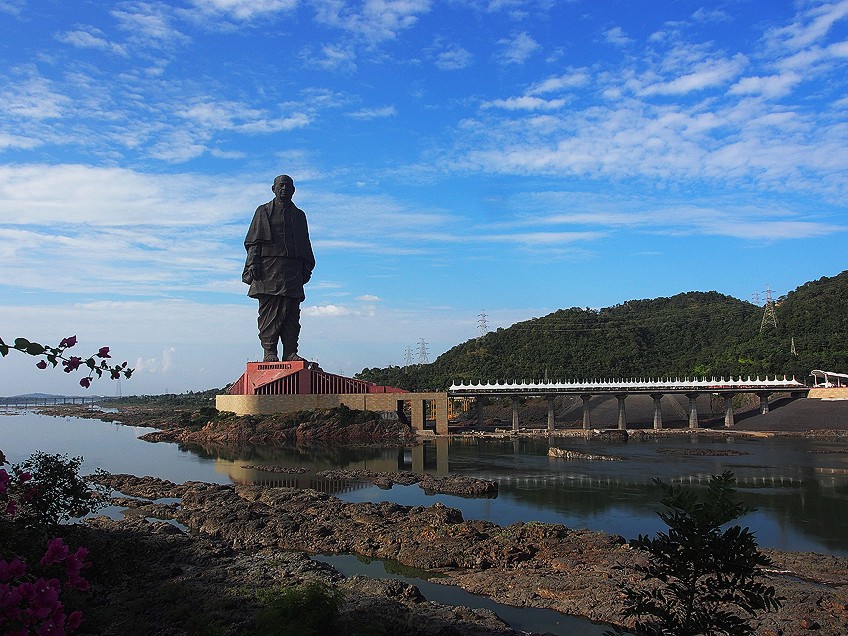
Guha claims that during the Split, Nehru wanted the state to force Muslims to remain in India and feel comfortable, but Patel preferred to lay the burden on the people themselves. Patel also informed Nehru that the minority had to dispel any questions about their allegiance that had arisen as a result of their previous affiliation with the desire for Pakistan. Patel, on the other hand, was successful in preventing assaults on a train carrying Muslim immigrants from India.
During the communal riots in September 1947, he was believed to have had ten thousand Muslims hide securely in the Red Fort and open kitchens created for them.
Patel was also thought to be kinder to Indian nationalism while being harder on Pakistan. He uncovered a riot plan, seized a significant haul of guns from the Delhi Jumma Masjid, and had a few conspirators slain by police, although his manner was regarded to be severe.
And that concludes our look at the biggest statue in the world. This Indian statue surely deserves its place as one of the most visited statues globally. The memorial, which is located 125 miles from the nation’s capital of Ahmedabad, is expected to become a patriotic destination for over 2.5 million tourists each year.
Take a look at our Statue of Unity facts webstory here!
Frequently Asked Questions
Where Is the World’s Tallest Statue?
In Gujarat, the monument may be located in the Kevadiya settlement on the Narmada River. It faces the Sardar Sarovar Dam, which is located 100 kilometers southeast of Vadodara. The monument and its environs cover an area of more than 2 hectares.
How Tall Is the Statue of Unity?
The biggest statue in the world stands 182 meters tall. When plinths are taken into account, the Statue of Unity is around four times taller than New York’s famed Statue of Liberty. The monument’s height surpasses that of the Spring Temple Buddha in Henan, China, which was formerly the highest statue in the world at 420 feet. Visitors can climb 500 feet to the viewing gallery, which is placed near the statue’s chest. More than 2,000 Indian laborers, as well as several hundred Chinese laborers, participated in the building activities.
Isabella studied at the University of Cape Town in South Africa and graduated with a Bachelor of Arts majoring in English Literature & Language and Psychology. Throughout her undergraduate years, she took Art History as an additional subject and absolutely loved it. Building on from her art history knowledge that began in high school, art has always been a particular area of fascination for her. From learning about artworks previously unknown to her, or sharpening her existing understanding of specific works, the ability to continue learning within this interesting sphere excites her greatly.
Her focal points of interest in art history encompass profiling specific artists and art movements, as it is these areas where she is able to really dig deep into the rich narrative of the art world. Additionally, she particularly enjoys exploring the different artistic styles of the 20th century, as well as the important impact that female artists have had on the development of art history.
Learn more about Isabella Meyer and the Art in Context Team.
Cite this Article
Isabella, Meyer, “Statue of Unity – Learn Everything About the World’s Tallest Statue.” Art in Context. May 4, 2022. URL: https://artincontext.org/statue-of-unity/
Meyer, I. (2022, 4 May). Statue of Unity – Learn Everything About the World’s Tallest Statue. Art in Context. https://artincontext.org/statue-of-unity/
Meyer, Isabella. “Statue of Unity – Learn Everything About the World’s Tallest Statue.” Art in Context, May 4, 2022. https://artincontext.org/statue-of-unity/.


